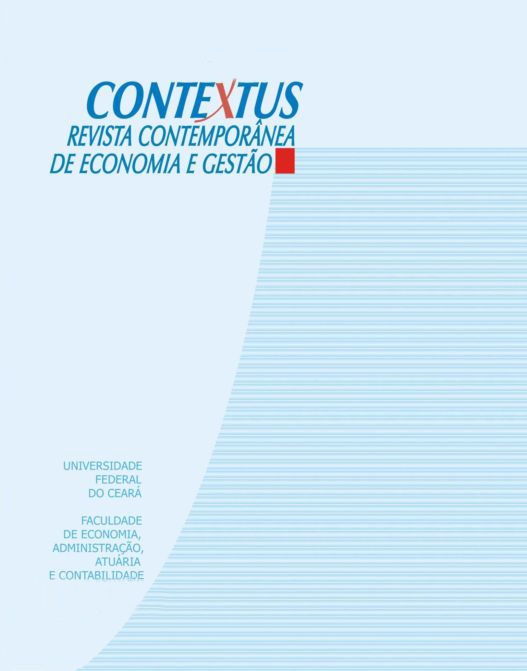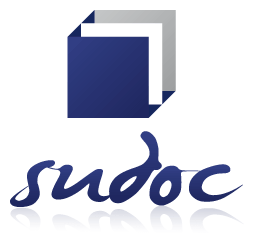ANALYSIS OF THE INNOVATIVE PRACTICES AT CONSTRUCTION INDUSTRY
DOI:
https://doi.org/10.19094/contextus.v14i2.757Keywords:
Innovation. Construction industry. Technology. Operational processes.Abstract
The complexity that has characterized the market relations, especially in the last two decades, with an ever increasing demand for innovative products and processes, has reflected even more in the traditional activities, such as the building sector. Although traditional, that segment has undergone many changes in the business model as a result of major technological advances, requiring companies to adapt to the new conditions, incorporating new technologies, materials and developing new processes, considered innovative. With the purpose of studying in depth this process a research with a qualitative single case study was conducted in an industrial building company, located in the metropolitan area of Porto Alegre, through in-depth interviews, analysis of the narratives and of documents. The results showed characteristics that required a specific design of the strategy, management practices and coordination of organizational resources, which allowed the company to become a reference in the sector.
References
ANSOFF, H. I. Estratégia Empresarial. São Paulo: McGraw-Hill, 1965.
ARGYRIS, C.; SCHÖN, D. A. Organizational learning II. Theory, Method and Practice. Massachusetts: Addison-Wesley, 1996.
AVELAR, A. C. B. S; MONTEIRO, A. O. A cooperação entre empresas de edificações na construção civil: a formação de alianças estratégicas em Salvador. Revista Gestão e Planejamento, Salvador, v. 14, n. 2, pp. 350-364, maio/ago. 2013.
BALL, K. Organization surveillance and the body: towards a politics of resistance. Organization, v.12, n.1, pp.89-108, 2005
BANDEIRA, R. A. M.; MELLO, L. C. B. B.; MAÇADA, A. C. G. Relacionamento interorganizacional na cadeia de suprimentos: um estudo de caso na indústria da construção civil. Produção, v. 19, n. 2, maio/ago. 2009, pp. 376-387
BARKER, J. R. Tightening the iron cage: coercitive control in self-managing teams. Administrative Science Quarterly, v.38, pp. 408-437, 1993.
BARNEY, J. Firm resources and sustained competitive advantage. Journal of Management, v.17, n.1, pp. 99-120, 1991.
BERNARDES, M. M S. Planejamento e controle da produção para empresas de construção civil. Rio de Janeiro: LTC, 2011.
BERNSTEIN, M. Identity Politics. Annual Review of Sociology; 2005; 31, pp.47-74.
BEUREN, I. M; FLORIANI, R.; HEIN, N. Indicadores de inovação nas empresas de construção civil de Santa Catarina que aderiram ao Programa Brasileiro de Qualidade e Produtividade no Habitat (PBQP-H). Perspectivas em Gestão & Conhecimento, João Pessoa, v. 4, n. 1, pp. 161-178, jan./jun. 2014.
BOJE, D. M. Stories of the storytelling organization: A postmodern analysis of Disney as “Tamara-Land”. Academy of Management Journal, August 1995, v. 35, pp. 997-1035.
BONOMA, T. V. Case research in marketing: opportunities, problems, and process. Journal of Marketing Research, v. 22, n. 2, pp. 199-208, 1985.
BROWN, J. S; DUGUID, P.. Knowledge and organization: A social-practice perspective. Organization Science; v. 12, n. 2, pp. 198-213, mar./apr. 2001.
CHAHARBAGHI; K.; NEWMAN, V.. Innovating: towards an integrated learning model. Management Decision. London: v. 34, n. 4, pp. 5- 13, 1996.
CHANDLER, A. D. Organizational Capabilities and the Economic History of the Industrial Enterprise. The Journal of Economic Perspectives. ; v. 6, n. 3, pp. 79-100, Summer 1992.
CHAPMAN, R.; HYLAND, P. Complexity and learning behaviors in product innovation. Technovation, v. 24, n. 7, pp. 553–561, 2004.
CHRISTENSEN, C. M.; RAYNOR, M. E. O Crescimento pela Inovação – Como crescer de forma sustentada e reinventar o sucesso. Rio de Janeiro: Elsevier, 2003.
CHRISTENSEN, J. F. Corporate strategy and the management of innovation and technology. Industrial and Corporate Change, v. 11, n. 2, pp. 263-288, 2002.
COURPASSON, D. Managerial strategies of domination – power in soft bureaucracies. Organization Studies, v. 21, n. 1, pp. 141-161, 2000.
CZARNIAWSKA, B. Anthropology and Organizational Learning. In: DIERKES, Meinolf; ANTAL, Ariane; B.; CHILD, John; NONAKA, Ikujiro (Orgs.). Organizational Learning and Knowledge, New York: Oxford, 2001. pp. 118-136.
DAVIS, M. M.; AQUILANO, N. J.; CHASE, R. B. Fundamentos da Administração da Produção. Porto Alegre: Bookman, 2003.
FARAH, M. F. S. Processo de trabalho na construção habitacional: tradição e mudança. São Paulo: Annablume, 1996.
FAYOL, H. Administração industrial e geral. 10ª ed. São Paulo: Atlas, 1990.
FELLS, M. J. Fayol stands the test of time. Journal of Management History, v. 6, n. 8, pp. 345-360, 2000.
FISCHER, G. N. Espaço, identidade e organização. In: CHANLAT, Jean-François (Coord.). O indivíduo na organização: dimensões esquecidas. 3ª. ed. São Paulo: Atlas, 1996. v. 2. pp. 81-102.
FOSS, N. J.; FOSS, K. The Next Step in the Evolution of the RBV: Integration with Transaction Cost Economics. Management Review, v. 15, n. 1, pp. 107-…, 2004.
FOUCAULT, M. Vigiar e punir: história da violência nas prisões. 25ª ed. Petrópolis: Vozes, 2002.
FREEMAN, C. The economics of industrial innovation. Cambridge: The MIT Press, 1989.
FREJ, T. A.; ALENCAR, L. H. Fatores de sucesso no gerenciamento de múltiplos projetos na construção civil em Recife. Produção, v. 20, n. 3, pp. 322-334, jul./set. 2010.
GAMBARDELLA, A.; MCGAHAN, A. M. Business model innovation: general purpose technologies and their implications for industry architecture. Long Range Planning, 43(2-3), pp. 262-271, 2010.
GEERTZ, C. A interpretação das culturas. Rio de Janeiro: LTC, 1989.
GRANT, R. M. The Resource-Based Theory of Competitive Advantage: Implications for Strategy Formulation. California Management Review, v. 33, n. 3, p. 114-133, Spring 1991.
GUEDES, A. A.; MEIRELLES, D. S.; COTI-ZELATI, P. E.. Projeto de habitação popular no Brasil e mudanças nos modelos de negócio da construção civil. Caderno Profissional de Administração – UNIMEP, v.5, n. 2, 2015
HABERMAS, J. Técnica e Ciência como “Ideologia”. Lisboa: Edições 70, 1993.
HALPIN, D. W.; WOODHEAD, R. W. Administração da construção civil. 2ª. ed. Rio de Janeiro: LTC, 2004.
HIRSCHFELD, H.. A Construção civil fundamental: modernas tecnologias. São Paulo: Atlas, 2000.
KIM, W. CH.; MAUBORGNE, R. A estratégia do Oceano Azul – como criar novos mercados e tornar a concorrência irrelevante. 5ª ed. Rio de Janeiro: Elsevier, 2005.
LIMMER, C. V. Planejamento, orçamentação e controle de projetos e obras. São Paulo: LTC, 1997.
LOASBY, B. J. The organisation of capabilities. Journal of Economic Behavior & Organization, v. 35, pp. 139-160, 1998.
MADHOK, A. The organization of economic activity: transaction costs, firm capabilities, and the nature of governance. Organization Science, v. 7, n. 5, pp. 577-590, 1996.
MAIOR, A. S. História Geral. São Paulo: Editora São Paulo, 1967.
MARKIDES, C. C. Business model innovation: what can the ambidexterity literature teach us. The Academy of Management Perspectives, 27(4), pp. 313-323, 2013.
MARTINS, P G.; LAUGENI, F. P. Administração da Produção. São Paulo: Saraiva, 2006.
MATTOS, A. D. Planejamento e controle de obras. São Paulo: Pini, 2010.
MEYER, J. W., ROWAN, B. Institutionalized organizations: formal structures as myth and ceremony. In: MEYER, J. W., SCOTT, W. R. Organizational Environments: ritual and rationality. Updated Edition. London: Sage, 1992.
MILLER, G. A. The Magical Number Seven, Plus or Minus Two: Some Limits on our Capacity for Processing Information. Psychological Review, Harvard University, n. 63, pp. 81-97, 1956.
MILLER, W. L.; MORRIS, L. 4th Generation R&D: Managing Knowledge, Technology, and Innovation. New York: John Wiley & Sons, Inc., 1998.
MINTZBERG, H. Strategy-making in three modes. California Management Review, v. 26, n. 2, pp. 44-53, 1973.
MOEN, T. Reflections on the Narrative Research Approach. International Journal of Qualitative Methods. 5 (4) December 2006.
NEDEFF, M. C.; DALBERTO, M.; DE TONI, D.; MILAN, G. S.; BARCELLOS, P. F. P. A percepção de gestores da construção civil acerca do conceito de estratégia organizacional: Um estudo exploratório. Revista de Negócios, vol. 19, n. 3, pp. 23-40, 2014.
NELSON, R. R.; WINTER, S. G. An evolutionary theory of economic change. Cambridge: Belknap Press, 1982.
NEVES, F. V. F.; GUERRINI, F. M. Modelo de requisitos e componentes técnicos para a formação e gerência de redes de cooperação entre empresas da construção civil. Gest. Prod., São Carlos, v. 17, n. 1, pp. 195-206, 2010
OCDE-FINEP. Manual de Oslo. Rio de Janeiro, 2006. Disponível em: http://download.finep.gov.br/imprensa/manual_de_oslo.pdf. Acesso em: 17 dez. 2012.
PEAUCELLE, J.-L. From Taylorism to Post-Taylorism simultaneously pursuing several management objectives. Journal of Organizational Change Management, v. 13, n. 5, pp. 452-464, 2000.
PENROSE, E. The theory of the growth of the firm. New York: Wiley, 1959.
PETERAF, M. A. The Cornerstones of Competitive Advantage: A Resource-Based View. Strategic Management Journal, v. 14, n. 3, pp. 179-191, mar. 1993.
POLKINGHORNE, D. E. Validity issues in narrative research. Qualitative Inquiry, v. 13, n. 4, pp. 471-486, 2007.
PORTER, M. E. Vantagem Competitiva – Criando e Sustentando um Desempenho Superior. Rio de Janeiro: Campus, 1989.
RIBEIRO, C. C; PINTO, J. D. S; STARLING, T. Materiais de construção civil. 2ª ed. Belo Horizonte, MG: UFMG, 2002.
RIESSMAN, C. K. Narrative analysis. London: SAGE, 1993.
RIPPER, E. Manual prático de materiais de construção: recebimento, transporte interno, estocagem, manuseio e aplicação. São Paulo: Pini, 2001.
RODNEY, M. Knowledge management as a catalyst for innovation within organizations: a qualitative study. Knowledge and Process Management, v. 7, n. 4, pp. 233-259, oct./dec. 2000;
RONCON, A.; OLIVEIRA, M. L.; BELTRAME, I. Processos gerenciais de gestão de pessoas em empresas do setor da construção civil. ReCaPe Revista de Carreiras e Pessoas São Paulo. Volume V - Número 01 – 2015.
ROSENBERG, N. Inside the black box: technology and economics. Cambridge: Cambridge University Press, 1982.
SAKO, M. Technology strategy and management: business models for strategy and innovation. Comunicações da ACM, 55(7), pp. 22-24, 2012.
SALGADO, J. C. P. Técnicas e práticas construtivas para edificação. 2ª. ed., rev. São Paulo: Érica, 2009.
SCHUMPETER, J. A. Teoria do desenvolvimento econômico: uma investigação sobre lucros, capital, crédito, juro e o ciclo econômico. São Paulo: Abril Cultural, 1982.
SILVA, Márcia Terra da; WARSCHAUER, Claus Leon; ROTONDARO, Roberto Gilioli; TORRES, O. F. F. Gestão de operações: a engenharia de produção a serviço da modernização da empresa: produção industrial; construção civil; competitividade; mercado. 2ª. ed. São Paulo: Fundação Vanzolini/Edgard Blücher, 1998.
SILVA, R. C.. Controle organizacional, cultura e liderança: evolução, transformações e perspectivas. II Encontro de Estudos Organizacionais, Recife, 2002.
SILVA, M. A. C; SOUZA, R. Gestão do processo de projeto de edificações. São Paulo: O Nome da Rosa, 2003.
SIMON, H. A. Bounded Rationality and Organizational Learning. Organization Science, v. 2, n. 1, pp. 125-134, 1991.
SINDUSCON-RS. Indicadores econômicos da construção civil. Disponível em: http://www.sinduscon-rs.com.br. Acesso em: 12 de Dezembro de 2012.
SLACK, N.; CHA.MBERS, S.; JOHNSTON, R.. Administração da Produção. São Paulo: Atlas, 2002.
SOUZA, E. L. P. Clima e Cultura organizacional: como se manifestam e como se manejam. São Paulo: Edgard Blücher, 1978.
SPRADLEY, J P. Anthropology: The cultural perspective. New York: John Wiley & Sons, 1975.
STRATI, A. Organizational symbolism as a social construction: A perspective from the Sociology of Knowledge. Human Relations, v. 51, n. 11; pp. 1379-1391, Nov. 1998
TEECE, D. Business models, business strategy, and innovation. Long Range Planning, 43(2-3), pp. 172-194, 2010.
THOMAZ, É. Tecnologia, gerenciamento e qualidade na construção. São Paulo: Pini, 2001.
TIDD, J.; BESSANT, J.; PAVITT, K. Managing innovation: integrating technological, market and organizational change. 3rd. ed. Chichester: John Wiley & Sons, 2005.
TISAKA, M. Orçamento na construção civil: consultoria, projeto e execução. 2ª. ed. rev. ampl. São Paulo: Pini, 2011.
TSANG, E. W. K. Choice of international technology transfer mode. Management International Review, v. 37, n. 2, pp.151-168, 1997.
TULL, D. S.; HAWKINS, D. I. Marketing Research - Meaning, Measurement and Method. London: Macmillan, 1976.
VERGARA, Sylvia Constant. Gestão de pessoas. 5ª. ed. São Paulo: Atlas, 2006.
VOLPE, Loredana; BIFERALI, Daniele. Edith Tilton Penrose, The Theory of the Growth of the Firm, John Wiley & Sons, New York, 1959. Springer Science+Business Media, 2008, v. 12, n. 1, pp. 119-125.
WEICK, K. E. Sensemaking in organization. London: Sage, 1995.
WERNERFELT, B. A resource-based view of the firm. Strategic Management Journal, v. 5, n. 2, pp. 171-180, 1984.
WHITTINGTON, R. O que é Estratégia. São Paulo: Pioneira Thomson Learning, 2002.
WILLIAMSON, P. J. Cost innovation: preparing for a ‘value-for-money’ revolution. Long Range Planning, 43(2- 3), pp. 343-353, 2010.
YIN, R. Estudo de caso: planejamento e métodos. Porto Alegre: Bookman, 2005.
Downloads
Published
How to Cite
Issue
Section
License
The authors, while doing the submission, accept the notice below:
We authors hold the copyright related to our paper and transfer Contextus journal the right for the first publication with a Creative Commons’ international license of the modality Attribution – Non-commercial 4.0, which in turn allows the paper to be shared providing that both the authorship and the journal’s right for initial release are acknowledged.
Furthermore, we are aware of our permission to take part in additional contracts independently for non-exclusive distribution of the version of our work published in this journal (e.g. publishing it in an institutional repository or as a book chapter), while acknowledging both the authorship and the journal’s initial publication.
We also certify that the paper is original and up to this date has not been released in any other journal, Brazilian or of another nationality, either in Portuguese or another language, as well as it has not been sent for simultaneous publication in other journals.
Last, we not only know that plagiarism is not tolerated by Contextus but also certify the paper presents the sources of passages from cited works, including those authored by ourselves.









3.png)


1.jpg)



1.jpg)


1.jpg)






.jpg)



1.jpg)

1.jpg)


1.jpg)

1.jpg)
1.jpg)
2.png)




1.jpg)
2.jpg)

1.jpg)





1.jpg)


1.jpg)
1.jpg)
